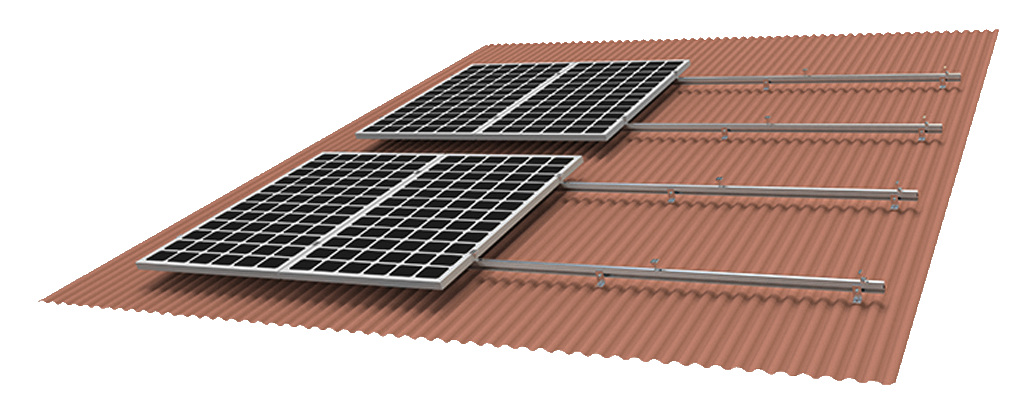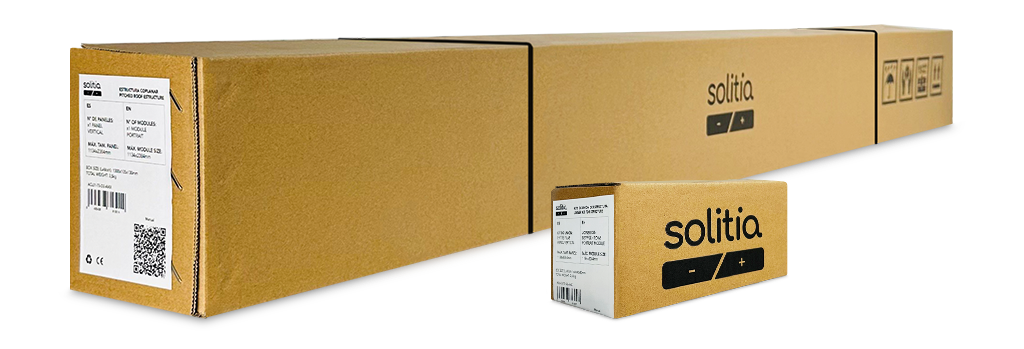PHOTOVOLTAIC MATERIAL FOR SOLAR ENERGY INSTALLATIONS
USE THE SEARCH ENGINE TO FIND YOUR PRODUCT
DISPLAY FILTER BY CATEGORIES
-
Accesories for structures
-
Central pressors (T, Omegas)
-
Coplanar structures: ACL [Aluminium, Coplanar, L-leg]
-
Side pressors (Z)
-
Inclined structures AEF [Aluminum, Elevated, Fixed]
-
Structure for AFH facades [Aluminium, Facade, Horizontal]
-
Marquesinas para aparcamiento
-
Structures Solar Panels / Solar Trackers
-
Metal sheet
-
Inclinadas para terreno
-
Inclined structures AER [Aluminum, Elevated, Adjustable]
-
Presores centrales TS
Serie ACL-TS-D2-AMX (ancho máx. 1150mm)
La nueva gama de kits de estructuras coplanares de SOLITIA en caja es una solución fácil de instalar y compacta de almacenar, con todos los elementos para el montaje en posición vertical de los paneles solares.
Características generales
- Montaje sencillo compatible con el popular sistema TS-D2, todo dentro de una caja.
- Kits para 1, 2 y 4 paneles (disponibles combinaciones para 3, 5 y 6 paneles).
- Kits expandibles mediante kits de unión.
- Aluminio anodizado (AL6005-T5).
- Normativa: Marcado CE/Eurocode


Kit de unión ACL-TS-D2-AMX
Si tu estructura se compone de 3, 5 o 6 paneles FV, incluimos todos los kits de unión necesarios para su montaje, adaptándonos a tus necesidades de espacio y energía. Además, los kits también están disponibles para su compra por separado.
Presor universar ACL-TS-D2-AMX
- Apto tanto como presor central como final, ajustando fácilmente su posición mediante giro.
- Ajustable en altura para marco de 30mm a 35mm (compatible 32mm, 33mm etc).
- Incluye muelle para facilitar la instalación del presor, manteniendo la pieza alzada a la hora de colocar el panel.
- Incluye clip de toma a tierra entre el marco de aluminio del panel solar y el perfil.
- Largo de la pieza de sujeción de 50mm, cumple exigencia de los mayores fabricantes de paneles solares del mercado.

|
|
|
|
|
|
|
|
|
|
|
|
|
|
|
|
|
|
|
|
|
|
|
|
|
|
|
|
|
|
|
|
|
|
|
|
|
|
||